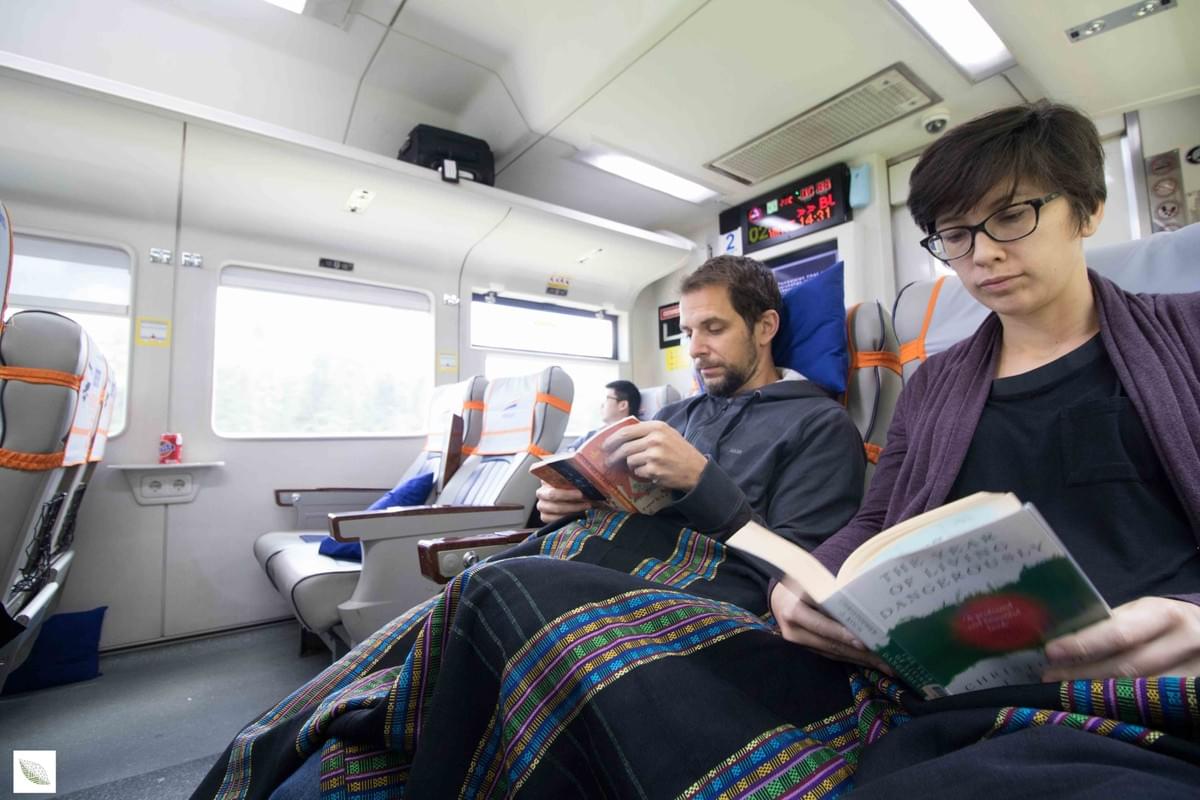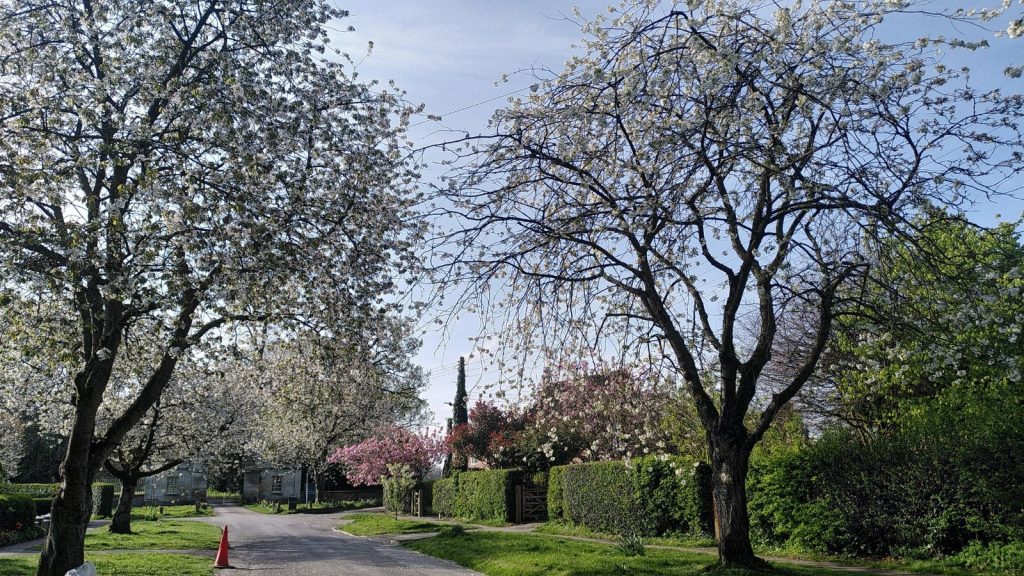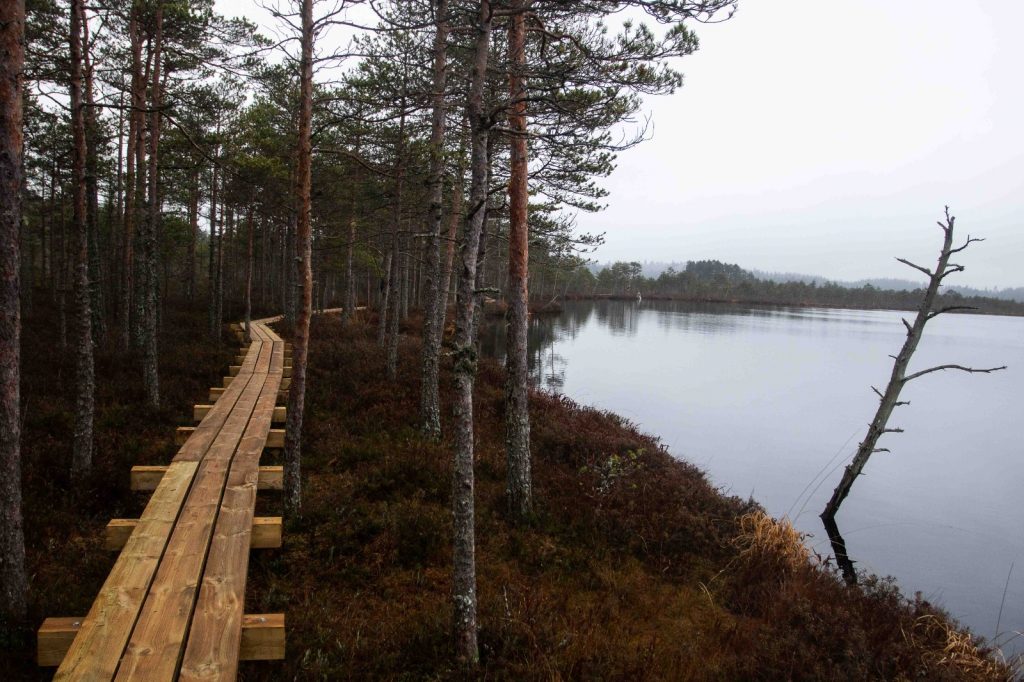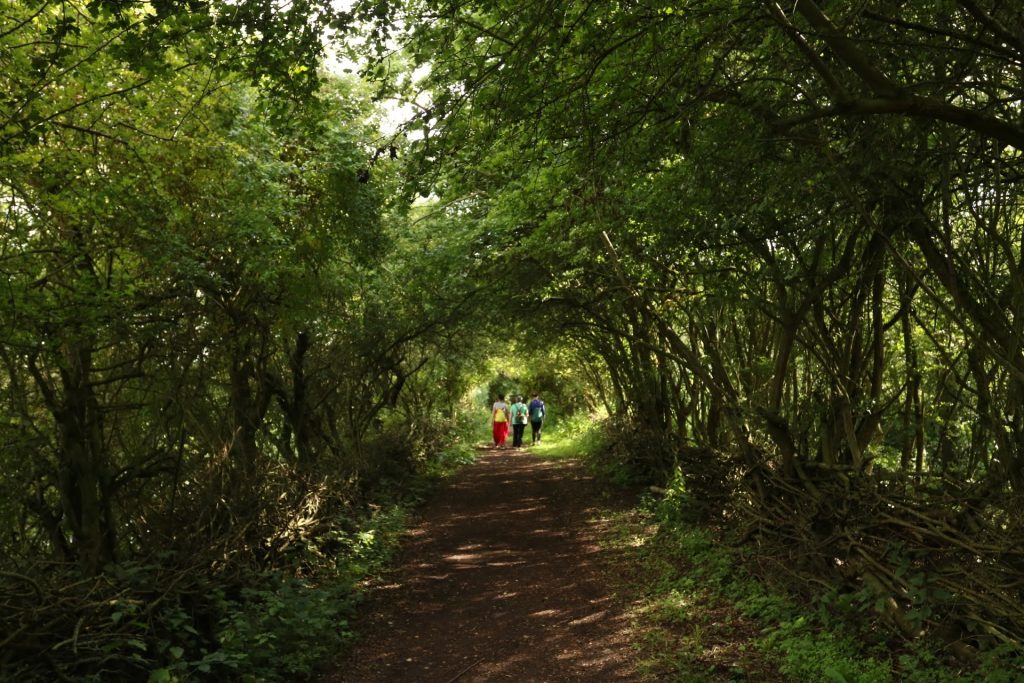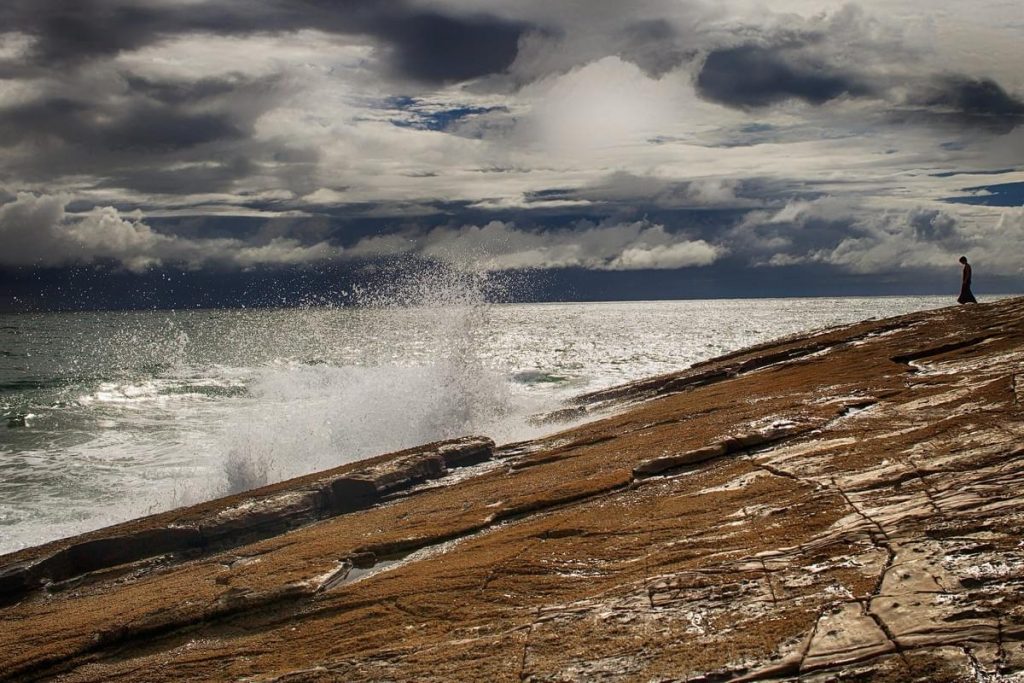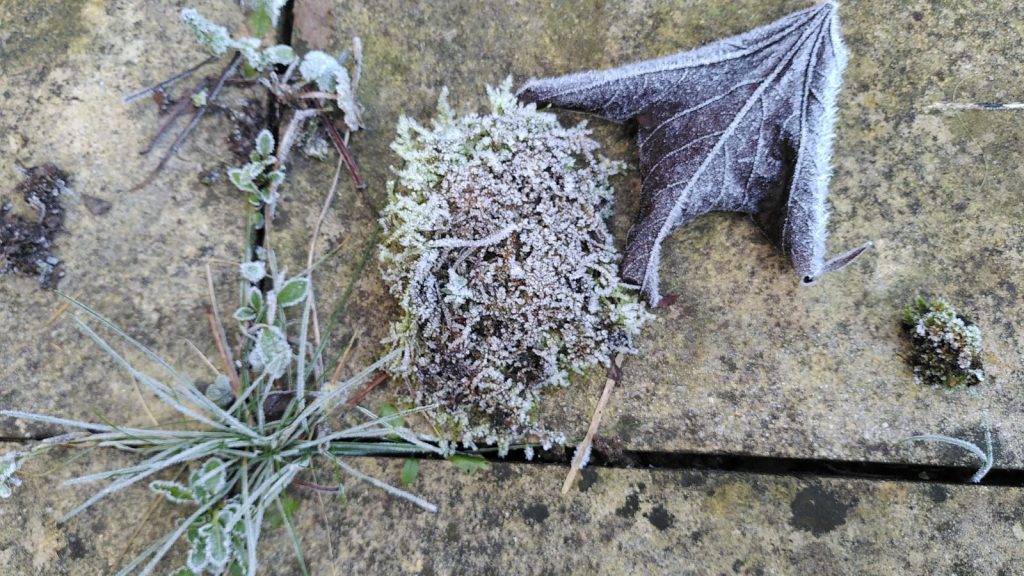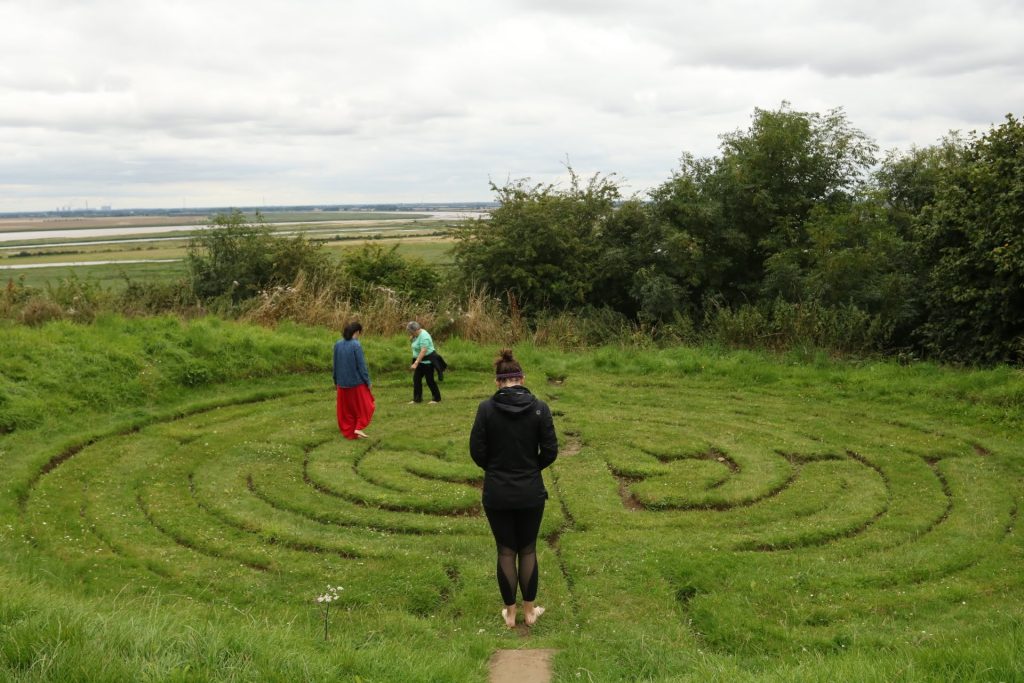Java trains
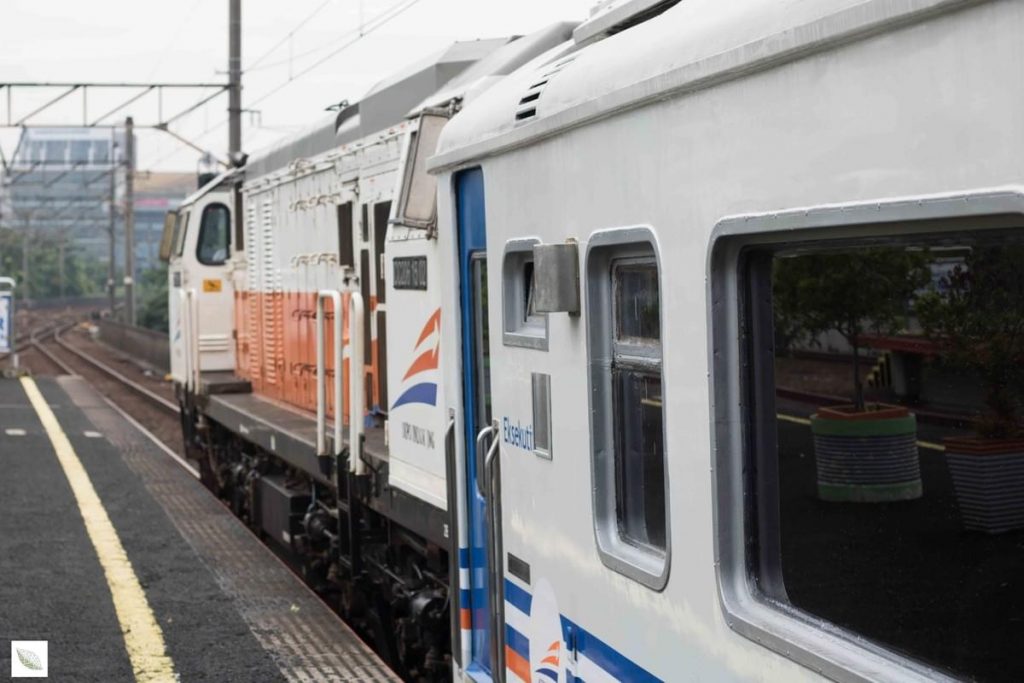
I love traveling by train, not only is it a good opportunity to cut down on my carbon emissions, it’s a nostalgic way of traveling. I’ve taken the train across Russia, across the US, through parts of China and Thailand. So when the opportunity came along to take the train to Yogyakarta – I jumped at it.
Accompanied in the lead up by Man in Seat 61, I felt confident throughout the booking process. It was easy to book through Tiket.com with an approximate £1 service charge. Friday and Saturday AM seats sell out faster, I booked ours a few weeks in advance just to be on the safe side.
After about 20 minutes breakfast is served on a trolley, variation of rice dishes, snacks, tea and coffee. For Rp30,000 I received a pretty tasty, warm pre-packaged meal with a side of pickled veg (I skipped the meatballs). The staff were very friendly and helpful.
Onboard there’s plenty of legroom, x2 power outlets and a small table in your arm rest. Seats recline. Carriage is clean and the air conditioning is pretty powerful. Bring a jumper and a blanket to keep you cosy. Toilets are squat toilets and clean. There’s a catering carriage, with face to face seating and tables but foodwise the trolley that comes around offering the same menu.
By this time Jakarta has made way for extensive rice paddies interspersed with freight storage, industrial factories and cement mixers. You’re able to get off at a few of the stops along the way, stretch your legs or join the Indonesians lighting up a clove Sampurna.
The Java scenery continues to get more impressive, with green hills climbing to the left of you. Paddy filed upon paddy field. Plantation upon plantation, crossing numerous rivers. And it’s easy to imagine that “only about 5 percent of the original habitat of Java’s ecoregion remains” (reference). This route was built by the Dutch to facilitate ever increasing amounts of sugar to be transported to port. After testing camels and donkeys the iron horse was built in 1867.
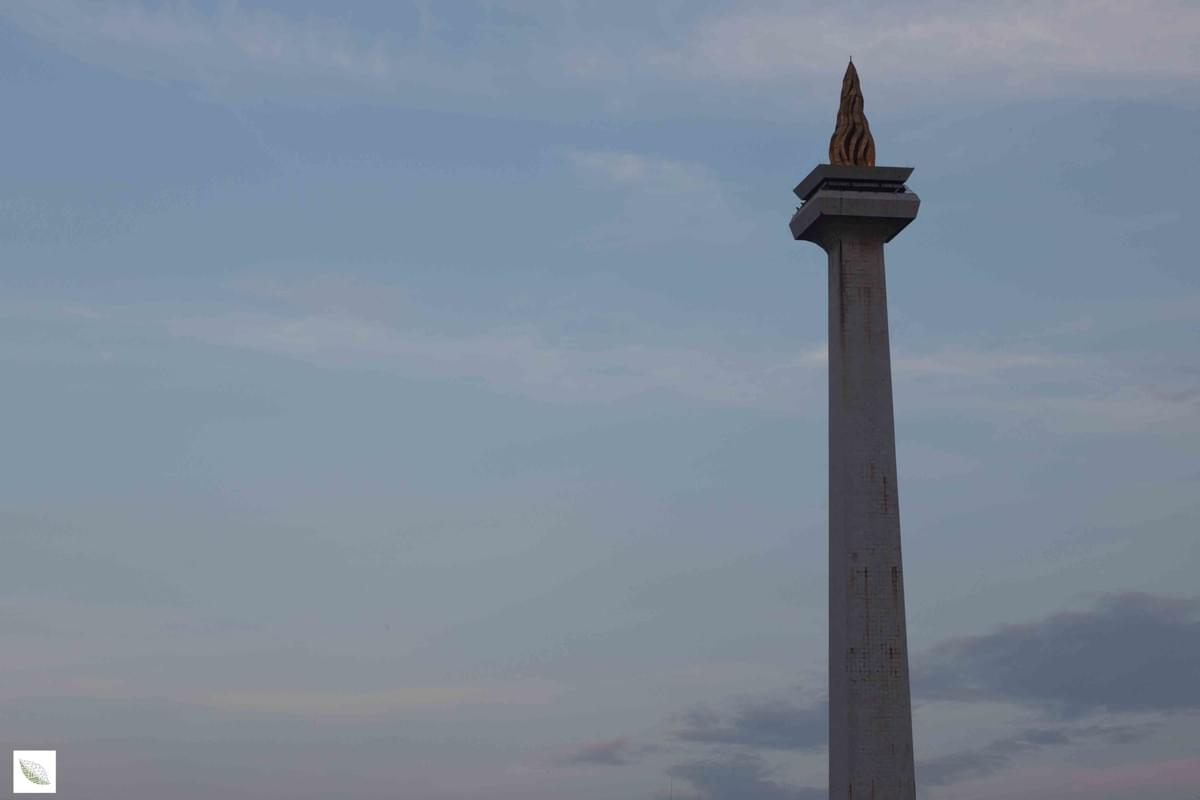
We left our Jakarta lodgings insanely early through fear of Jakarta morning traffic, our Uber made it in good time and we were rewarded with a beautiful sunrise over Jakarta’s skyscrapers and the National Monument. With time to kill we tried the coffee and rotis from the station sellers, you’re allowed through to the platform 2 hours before departure. The train pulled in 20 minutes early so we found our seats and settled in. Plenty of storage space with generous overhead compartments. We departed from platform 3 on the Argo Dwipangga at 8am – right on time.
We start slow, and from the window you can see, squeezed down the sides of the tracks are small shacks with clothes hanging out to dry in the morning sun. We pass busy suburban train stations with commuters waiting – early morning commuters seem to have the same expression the world over. Others at their morning business, chatting over a coffee. We pick up speed the farther we put Jakarta behind us.
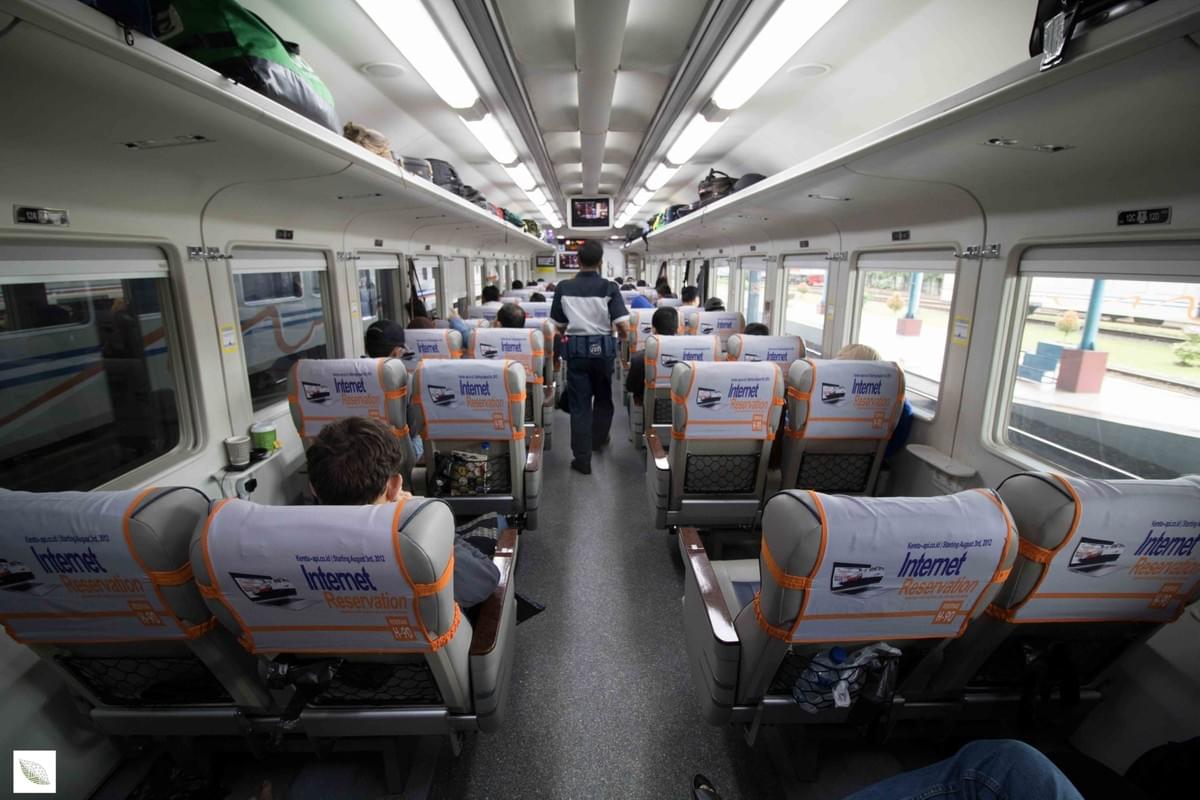
After about 20 minutes breakfast is served on a trolley, variation of rice dishes, snacks, tea and coffee. For Rp30,000 I received a pretty tasty, warm pre-packaged meal with a side of pickled veg (I skipped the meatballs). The staff were very friendly and helpful.
Onboard there’s plenty of legroom, x2 power outlets and a small table in your arm rest. Seats recline. Carriage is clean and the air conditioning is pretty powerful. Bring a jumper and a blanket to keep you cosy. Toilets are squat toilets and clean. There’s a catering carriage, with face to face seating and tables but food-wise the trolley that comes around offering the same menu.
By this time Jakarta has made way for extensive rice paddies interspersed with freight storage, industrial factories and cement mixers. You’re able to get off at a few of the stops along the way, stretch your legs or join the Indonesians lighting up a clove Sampurna.
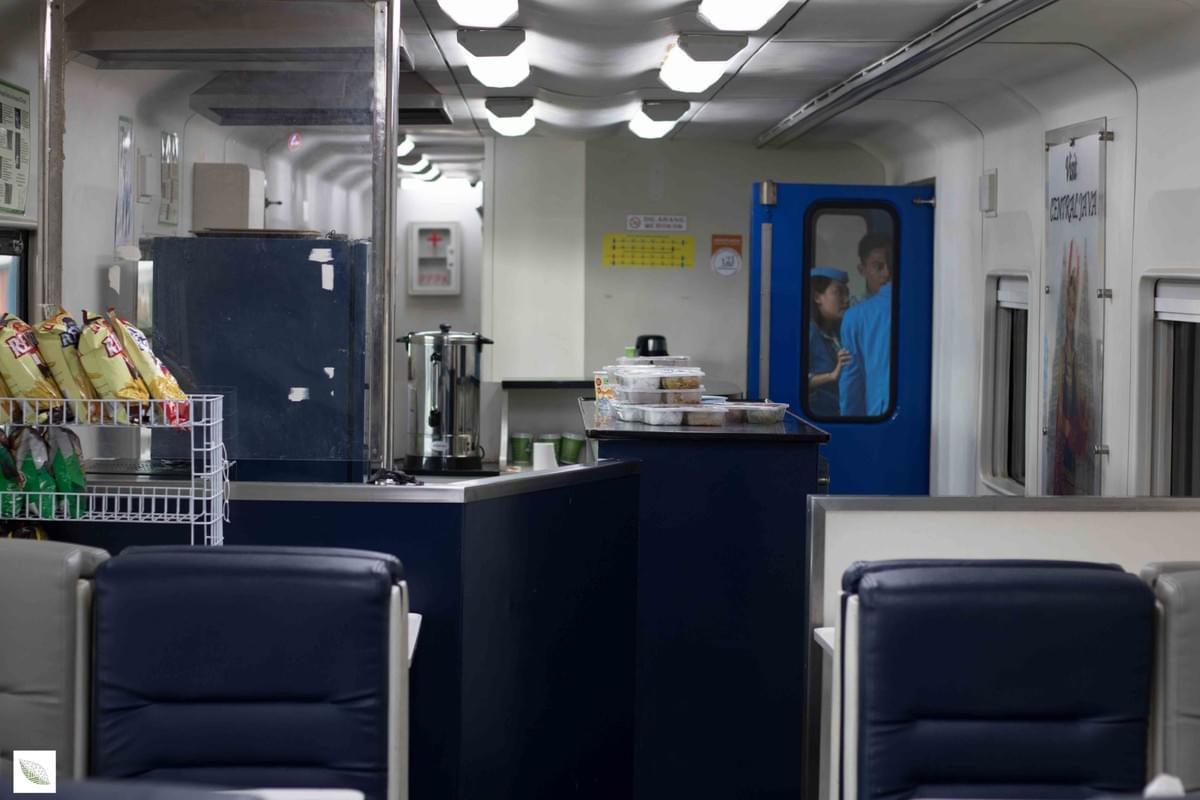
The Java scenery continues to get more impressive, with green hills climbing to the left of you. Paddy filed upon paddy field. Plantation upon plantation, crossing numerous rivers. And it’s easy to imagine that “only about 5 percent of the original habitat of Java’s ecoregion remains” (reference). This route was built by the Dutch to facilitate ever increasing amounts of sugar to be transported to port. After testing camels and donkeys the iron horse was built in 1867.
Bringing us back to the present we pulled into Yogyakarta a few minutes early. Announcements were made in dual language and in good time to collect your belongings. We skipped the usual taxis, walking a little way to pick up a Grab taxi who was 20% of the price we were being quoted by the traditional taxi firms. At time of writing Uber was only operating a motor service while Grab had cars available as well.
